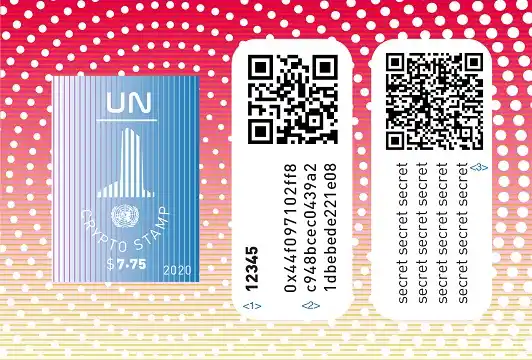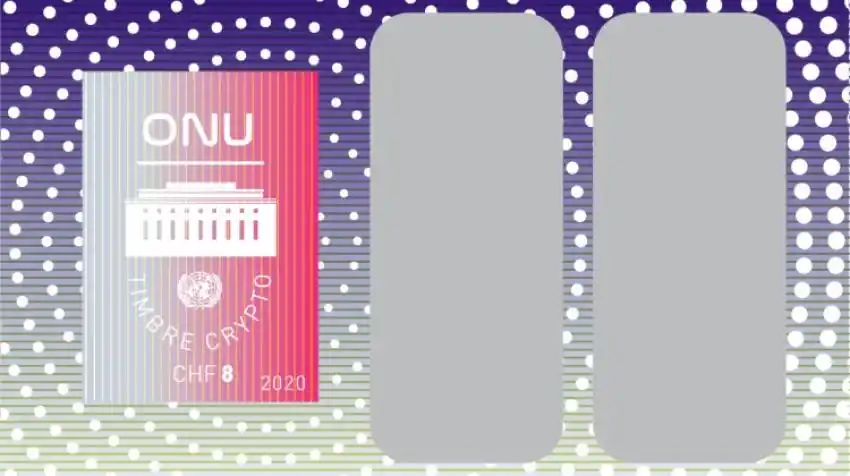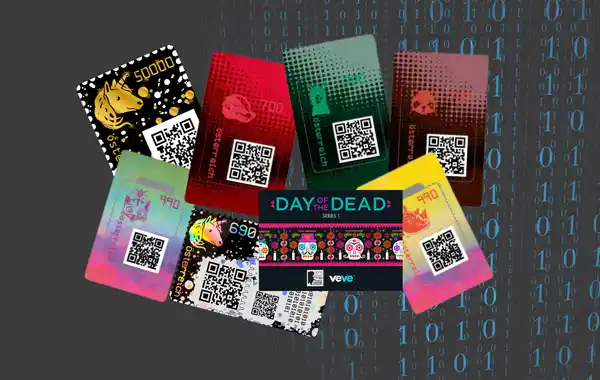20 June 2022
|
You may have heard of cryptocurrencies or non-fungible tokens (NFTs), but what do these modern ways of trading have to do with stamp collecting? Quite a lot actually, and crypto-stamps are only going to get more popular, as Devlan Kruck explains
What is a crypto-stamp?
A crypto-stamp consists of two parts:
- A traditional physical stamp which can be used to post your mail, or collected just like any other stamp
- A digital image of a stamp which is stored on a blockchain – a digital ledger – and can be viewed, collected, sold or traded.
The acronym ‘NFT’ stands for ‘non-fungible token’ and is a unit of data stored on a blockchain.
Stamps Monthly Email
The ‘Stamps Monthly’ email is sent to the All About Stamps audience each month. Traders can promote their stock, price list, website, or eBay listing on the email and quickly reach thousands of stamp collectors. Sign up to receive the 'Stamps Monthly' email right now - it's free!
This blockchain cannot be altered and so provides proof of ownership and a record of the price paid for a particular unit stored as an asset. So, a crypto or ‘NFT stamp’ is a digital image stored as a piece of data within a digital ledger which proves that the asset is unique and not interchangeable. This technology doesn’t include copyright and it is worth noting that the ability to view the NFT record is not limited to the owner.
Who can issue crypto-stamps?
Anyone can create a crypto-stamp, ‘mint’ it to the data ledger and offer it for sale.
However, postal authorities around the world are now beginning to utilise this blockchain technology (which is used for crypto currency such as Bitcoin) to issue crypto-stamps.
Austrian Post (Österreichische Post AG), the Austrian equivalent of the Royal Mail, was the first authority in the world to issue a crypto-stamp, in June 2019. They have since issued a second series (2.0), a third (3.0) and in September 2021 a fourth issue (3.1), all which sold out online within minutes.
Other postal authorities to have joined the crypto-stamp market include:
- Switzerland
- United Nations
- Croatia
- Gibraltar
- USA
- United Arab Emirates
Again, all have seen unprecedented demand for this innovative strand of stamps and instantly sold out; the USA's offering reportedly went within one second.
Other postal authorities are sure to follow suit, and as a result of the overwhelming interest in these digital stamps a reseller market has emerged, with the stamps stamps selling for 10 to 100 times their original value.
Prices range from £4 to £50 but have quickly risen to £40 to £1,000 and in some cases more.
Can crypto-stamps be used for postage?
The digital stamp at this current time cannot be used to post mail, although the offerings so far include a virtual collection space or vault, and in the case of the recent offering from the USPS the ability to see your stamp in augmented reality in your own room.
However, as mentioned, all the postal authority issued crypto-stamps have been twinned, or at least allow you to buy the physical version which can be used as postage. Of course it is unlikely these stamps are being used as widely as they are being collected, and indeed the reseller market would suggest that collectors are keeping the physical stamps.
Is this stamp collecting or investing?
NFT is being used to sell other digital assets, such as art, music, sports and even tweets. This is a speculative marketplace as these assets do not have a practical purpose but offer the opportunity to acquire a unique piece of data, with a digital image attached.
Following the trend in gaming and gif and jpg assets, these are offered in effect as an investment, which could go up or down in value. Crypto-stamps are offered in the same manner, and the phenomemnon has caught the attention of a younger, digitally savvy audience.
However, there is increasing interest within the hobby too, and some collectors are buying these digital stamps to add to their collections.
What does this mean for philately?
As with any emerging market it provides an opportunity for more people to get involved and offers another branch within philately to explore.
Thematic collectors may have no interest in the digital stamps but if their area of collection covers any of the topics offered by the postal authorities thus far, or in the future, you can see that they will want to add these to their collection.
And whilst a limited number of traditional philatelists are getting involved with crypto-stamps at the moment it may be one way to attract new collectors to the hobby.
One fact we have to face is that physical stamps may soon be confined to the same realms as LPs, books and DVDs. All remain relevant to a degree, and are still kept by people and traded, but the masses who buy and sell music, books and films, and thus where the interest and real money is, are all digitally focused.
Are there risks and downsides to collecting crypto-stamps?
The key risk is that this is an over-hyped investment bubble that will inflate and burst at some stage. If so, that is nothing new in stamp collecting.
Investment schemes have always failed in the past, some with devastating effect.
However, it could grow and innovate, and if so this will attract a new audience to the hobby, which may in turn inject more energy and finance into the traditional forms of collecting.
Other pitfalls are the fact that, like with traditional stamps, it is possible to conduct what is termed a copy fraud, where someone ‘mints’ (registers an asset on the blockchain) an asset which they do not own and then sells it.
There is also the possibility of accounts being hacked and theft of assets and or money, but then aren’t there risks of theft with physical items too? At the moment these incidents are rare.
Sign up to the FREE newsletter to receive more stamp collecting articles, information, inspiration and advice, direct to your in-box.
So is this the future of our hobby?
The traditional philatelist might not be buying up these crypto-stamps at this stage, but if this new technology connects the stamp present with the stamp future then there’s a chance future philatelists will look back to the philatelic past during their collecting journey.
If that happens then crypto-stamps might well hold the key to the future of philately.
Stamps Monthly Email
The ‘Stamps Monthly’ email is sent to the All About Stamps audience each month. Traders can promote their stock, price list, website, or eBay listing on the email and quickly reach thousands of stamp collectors. Sign up to receive the 'Stamps Monthly' email right now - it's free!










